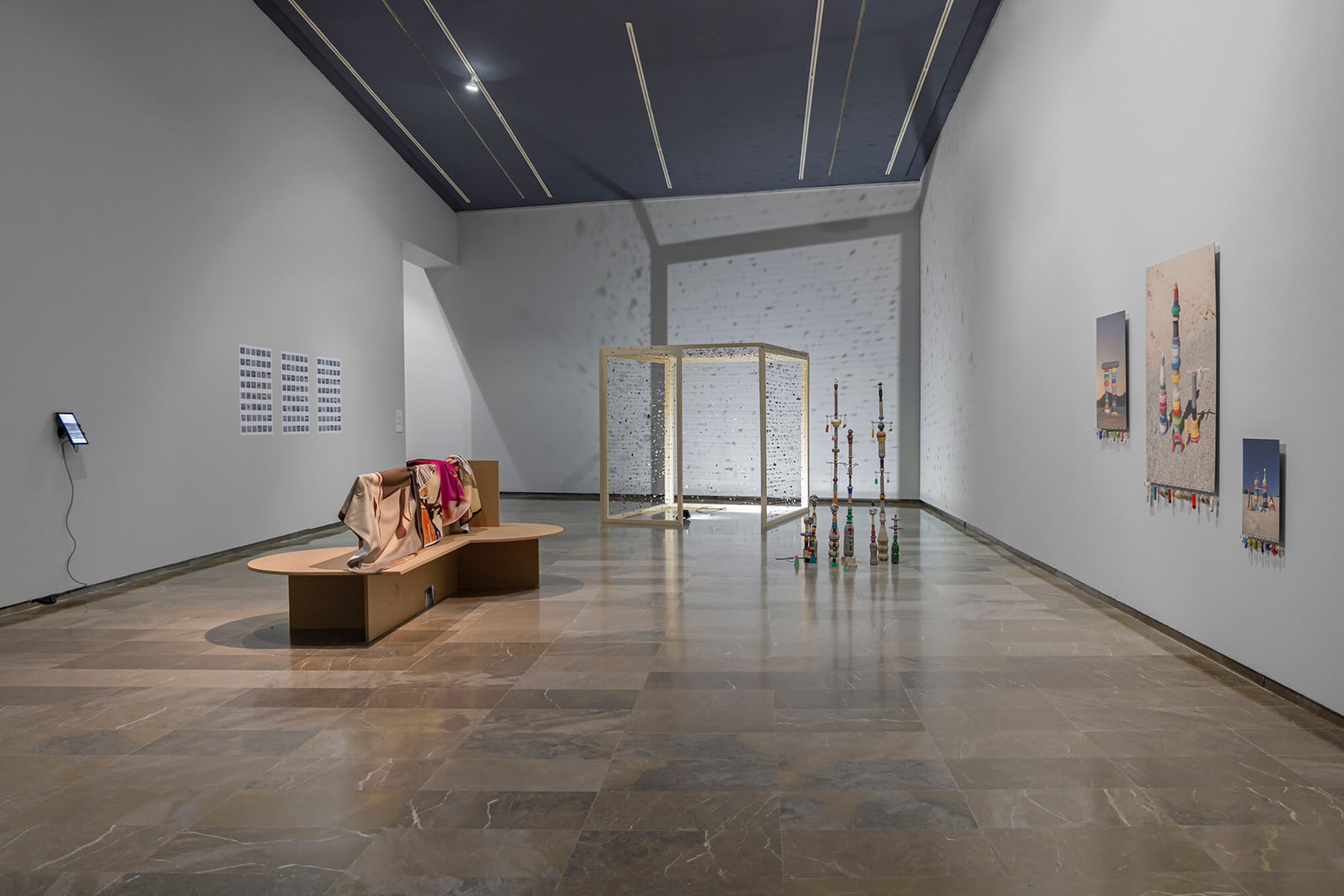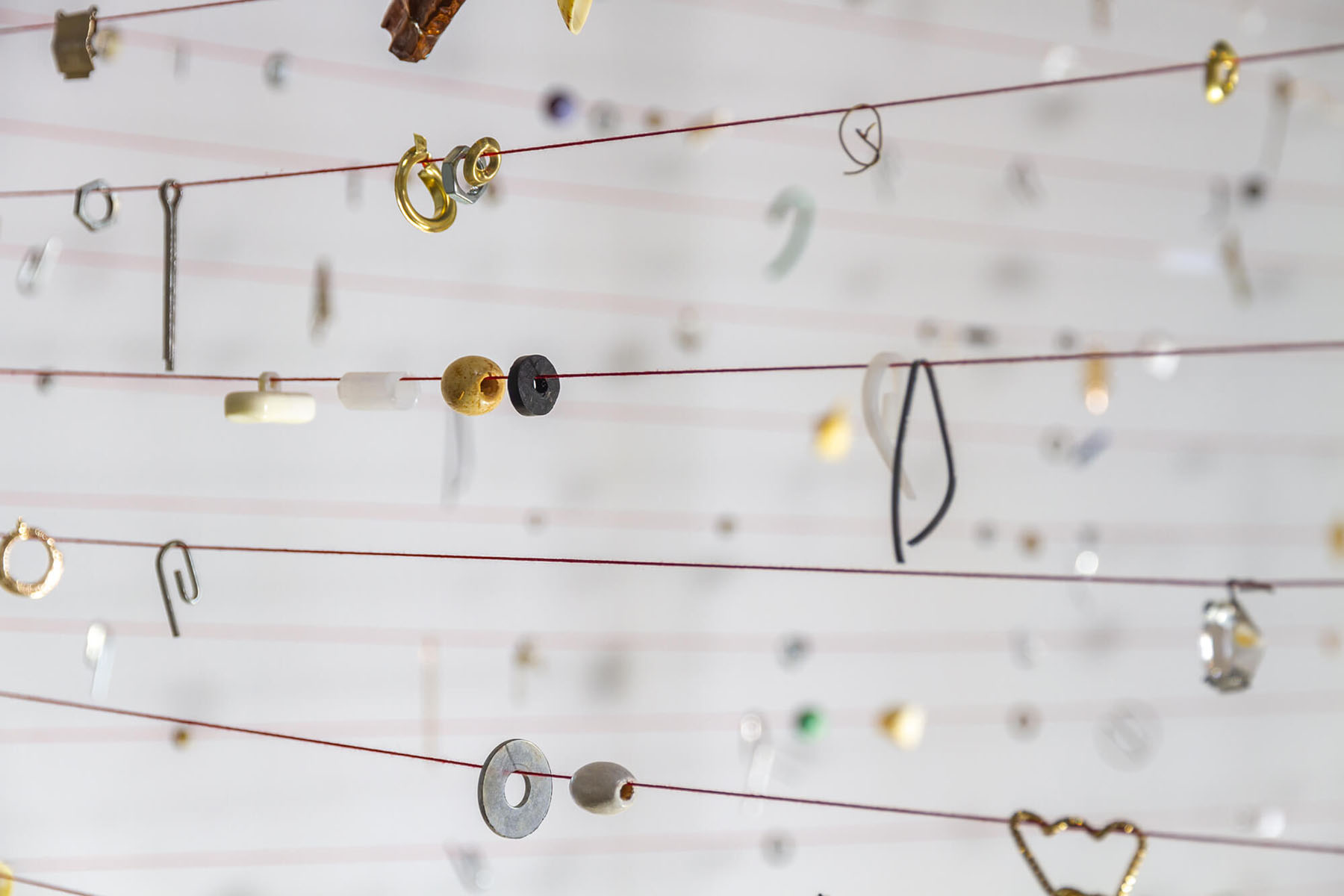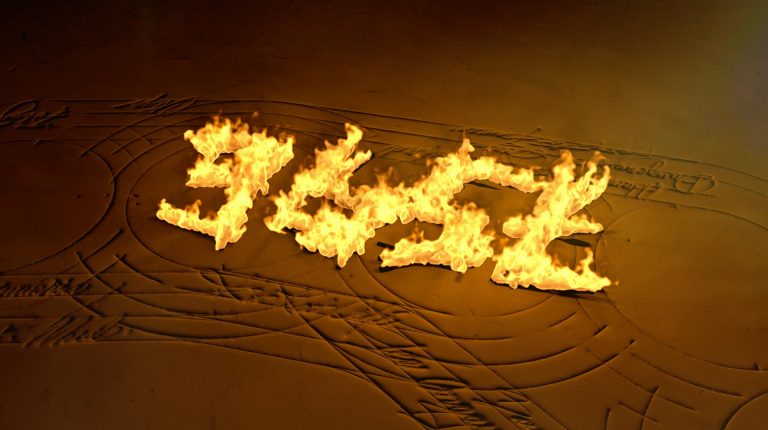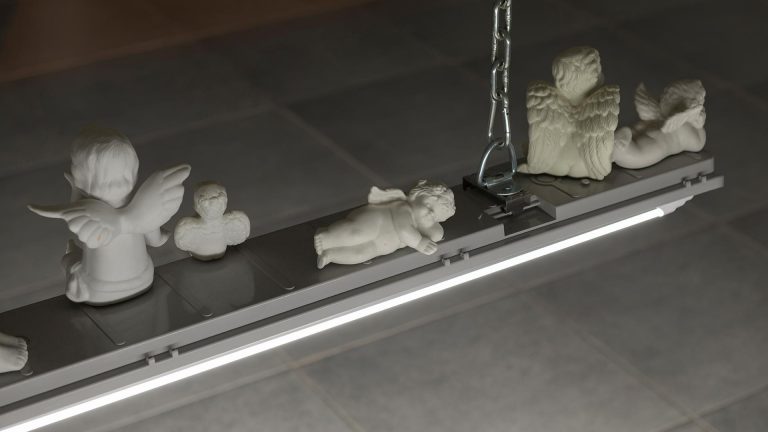Artists: Jørund Aase Falkenberg, Elena Aitzkoa, Anaís Angulo Delgado, Lucía C. Pino, Alberto Feijóo, Albert Gironès, Christian Lagata, Julia Llerena, Jesús Palomino, Julià Panadès
Exhibition title: Between Debris and Things
Curated by: Antonio R. Montesinos
Venue: CCCC Centre del Carme, Valencia, Spain
Date: February 14 – August 30, 2020
Photography: all images copyright and courtesy of the artists and CCCC Centre del Carme, Valencia
Between debris and things is an exhibition project selected in the Consorci de Museus de la Comunitat Valenciana’s open call for curators. The exhibition showcases artworks by Jørund Aase Falkenberg, Elena Aitzkoa, Anaís Angulo Delgado, Lucía C. Pino, Alberto Feijóo, Albert Gironès, Christian Lagata, Julia Llerena, Jesús Palomino and Julià Panadès. Besides the works on view in the hall, the exhibition will be fleshed out with a number of tie-in activities which will be held throughout the duration of the exhibition, including a performance by Elena Aitzkoa, a workshop by Alberto Feijóo and a lecture by Federica Matelli.
Back in the 1960s Robert Smithson had already spoken to us about abandoned objects, uncovering the hidden face of capitalist consumerism. In his essay A Tour of the Monuments of Passaic (1967), Smithson applied a strategy of resignification to the industrial ruins in the city of Passaic, focusing his attention of its urban outskirts. These spaces, which Smithson called “entropic landscapes”, are abandoned places halfway between the city and the countryside. The monuments he describes are the end result of man’s flawed attempt at ordering nature and are, inasmuch as contemporary ruins, in the process of being re-absorbed by nature. When using the word “entropic” he wished to define the tendency towards natural balance that consists in a process of dispersion and loss of energy. These processes mean that what has been ordered by man (city planning, architecture, and so on) slowly breaks away and returns to nature. For many decades, this phenomenon was associated with chaos and defined as a movement contrary to evolution, but ultimately it reminds us of man’s limited and ephemeral capacity for action on the natural context.
In his essay Entropy Made Visible (1973) Smithson defined entropy as an effect that contradicts the usual notion of a mechanicist world view. In this text he talked about the problems of waste generated by capitalist society. Though Smithson speaks about recycling and the separation of garbage as methods unable to stop human impact on the environment, it is intriguing to note how he presciently anticipated present-day theories on how human activity on the planet is reaching such a level that we can now rename our era as the Anthropocene, or Capitalocene, (as Donna Haraway redefined it).
Our present moment is defined by two situations which are, in principle, opposed: on one hand, it is increasingly more obvious that the speed of growth required by capitalism is going to leave an indelible mark of waste and modifications on the planet; and, on the other, in present-day philosophy it is increasingly more common to speak about displacing the human being from the centre as an interpreter of the world. In Dark Ecology (2016), Timothy R. Morton advocates a rewriting of ecology and the effects of human interaction on nature without prioritizing humankind, eliminating the idea of “nature” as something outside of or removed from the human world and ditching our distinctions between natural and artificial. According to Morton “the Anthropocene is no more than the name we have given to the fact that there are now materials made by humans which cover the earth’s crust, like, for instance, all kinds of asphalt, which geologists are starting to treat as a new type of mineral. And all kinds of plastics, which, from a certain viewpoint, are also a new mineral.” In Vibrant Matter, a Political Ecology of Things (2010), Jane Bennett takes an anti-anthropocentrist stance, challenging the conventional definition of material as inert. Borrowing from Spinoza’s “affective” bodies and Deleuze and Guattari’s “assemblages”, she defends the active role of non-human materials and argues that inanimate objects possess what she calls “thing-power” or agency on the world: they are able to produce effects and alter the course of events.
This exhibition project wishes to bring together works by a series of artists whose practices are grounded in this conceptual context and based on found materials and objects. The selected artists address various approaches to assemblage, establishing a new kind of relationship with these remains that do not impose any kind of intentionality but rather engage with the relationships which they themselves can create with a view to generating a new narrative.
Between Debris and Things, 2020, exhibition view, CCCC Centre del Carme, Valencia
Between Debris and Things, 2020, exhibition view, CCCC Centre del Carme, Valencia
Between Debris and Things, 2020, exhibition view, CCCC Centre del Carme, Valencia
Between Debris and Things, 2020, exhibition view, CCCC Centre del Carme, Valencia
Between Debris and Things, 2020, exhibition view, CCCC Centre del Carme, Valencia
Between Debris and Things, 2020, exhibition view, CCCC Centre del Carme, Valencia
Jørund Aase Falkenberg, Supernova (Bilbao), 2014, Fabric found, torn, washed and dried in dryer
Jørund Aase Falkenberg, Supernova (Bilbao), 2014, Fabric found, torn, washed and dried in dryer
Jørund Aase Falkenberg, Supernova (Bilbao), 2014, Fabric found, torn, washed and dried in dryer
Elena Aitzkoa, Zarza amarilla, 2019 Plaster, pigmentom, cloths, sticks, oil; Liquen, 2019 Plaster, pigmentom, cloths; Ascua, 2019 Plaster, pigmentom, cloths; Oxígeno, 2019 Mixed media: pelaster, pigmentom, cloths; Noche en la luna, 2019 Plaster, pigmentom, cloths., concrete, *Courtesy of Rosa Santos Galery.
Elena Aitzkoa, Zarza amarilla, 2019 Plaster, pigmentom, cloths, sticks, oil
Elena Aitzkoa, Liquen, 2019 Plaster, pigmentom, cloths
Elena Aitzkoa, Ascua, 2019 Plaster, pigmentom, cloths
Anaís Angulo Delgado, Sorolla – Leví, 2018 – 2019, De-construction and upholstery
Anaís Angulo Delgado, Sorolla – Leví, 2018 – 2019, De-construction and upholstery
Anaís Angulo Delgado, Sorolla – Leví, 2018 – 2019, De-construction and upholstery
Lucía C. Pino, VOLUPTUOSO, 2015 Bass drum, embedded clay, two fluorescent lamps whith protection for outdoors with 8 w; PLODDING POWER poder andar con paso pesado, 2016 Plaster, paint, steel; IRDIAL II, 2015 Wood, mirror tiles, polyester resin, paint, feathers, silicone, chains, steel wire, and rnbuckles. *Courtesy of Ana Mas Galery.
Lucía C. Pino, IRDIAL II, 2015 Wood, mirror tiles, polyester resin, paint, feathers, silicone, chains, steel wire, and turnbuckles
Lucía C. Pino, IRDIAL II, 2015 Wood, mirror tiles, polyester resin, paint, feathers, silicone, chains, steel wire, and turnbuckles
Lucía C. Pino, IRDIAL II, 2015 Wood, mirror tiles, polyester resin, paint, feathers, silicone, chains, steel wire, and turnbuckles
Lucía C. Pino, IRDIAL II, 2015 Wood, mirror tiles, polyester resin, paint, feathers, silicone, chains, steel wire, and turnbuckles
Alberto Feijóo, Room bench / storage structure. Mod. 1, 2019-2020 Wood Medium density board (DM) 20mm and digital print on fabric 120×85 cm
Alberto Feijóo, Room bench / storage structure. Mod. 1, 2019-2020 Wood Medium density board (DM) 20mm and digital print on fabric 120×85 cm
Alberto Feijóo, Room bench / storage structure. Mod. 1, 2019-2020 Wood Medium density board (DM) 20mm and digital print on fabric 120×85 cm
Alberto Feijóo, Room bench / storage structure. Mod. 1, 2019-2020 Wood Medium density board (DM) 20mm and digital print on fabric 120×85 cm
Albert Gironès, @espontani, 2019 Digital platform activated by a tablet
Albert Gironès, @espontani, 2019 Digital platform activated by a tablet
Albert Gironès, @espontani, 2019 Digital platform activated by a tablet
Christian Lagata, Salir del surco al labrar la tierra II (instalación), 2020 Recovered and intervened objects and materials, wood and tiles, Untitled (Haría), 2017, Photography. Inkjet on Hahnemühle Photo Rag paper 188 gr. Ed 7 + p.a
Christian Lagata, Salir del surco al labrar la tierra II (instalación), 2020 Recovered and intervened objects and materials, wood and tiles
Christian Lagata, Salir del surco al labrar la tierra II (instalación), 2020 Recovered and intervened objects and materials, wood and tiles
Christian Lagata, Untitled (Haría), 2017 Photography. Inkjet on Hahnemühle Photo Rag paper 188 gr. Ed 7 + p.a
Julià Panadès, Anthropocene Rituals, 2018 Assemblies (plastic, cement, shells) / Digital photography
Julià Panadès, Anthropocene Rituals, 2018 Assemblies (plastic, cement, shells) / Digital photography
Julià Panadès, Anthropocene Rituals, 2018 Assemblies (plastic, cement, shells) / Digital photography
Julià Panadès, Anthropocene Rituals, 2018 Assemblies (plastic, cement, shells) / Digital photography
Julià Panadès, Anthropocene Rituals, 2018 Assemblies (plastic, cement, shells) / Digital photography
Julià Panadès, Anthropocene Rituals, 2018 Assemblies (plastic, cement, shells) / Digital photography
Julià Panadès, Anthropocene Rituals, 2018 Assemblies (plastic, cement, shells) / Digital photography
Jesús Palomino, ATLAS OF ABANDONED OBJECTS, Poster Edition Seville, 2019-2020 Edición de 500 pósters, 594×841 mm
Jesús Palomino, ATLAS OF ABANDONED OBJECTS, Poster Edition Seville, 2019-2020 Edición de 500 pósters, 594×841 mm
Jesús Palomino, ATLAS OF ABANDONED OBJECTS, Poster Edition Seville, 2019-2020 Edición de 500 pósters, 594×841 mm
Jesús Palomino, ATLAS OF ABANDONED OBJECTS, Poster Edition Seville, 2019-2020 Edición de 500 pósters, 594×841 mm

















































